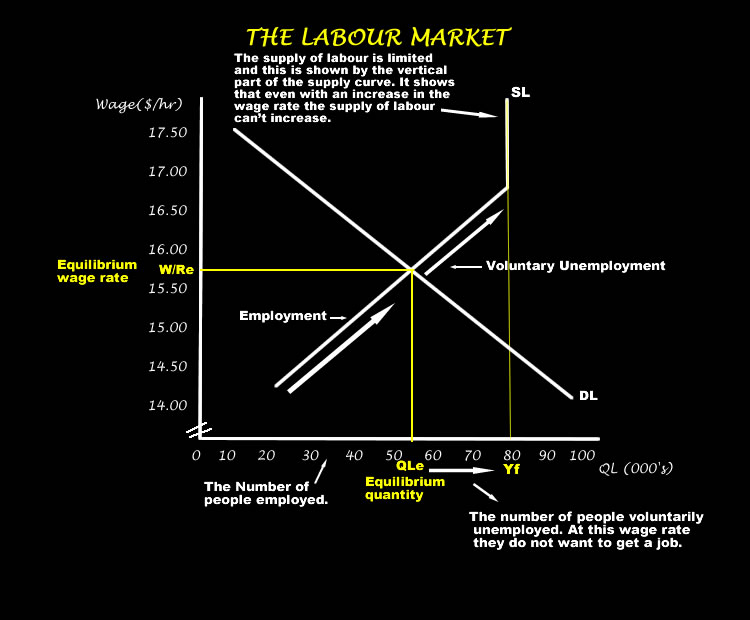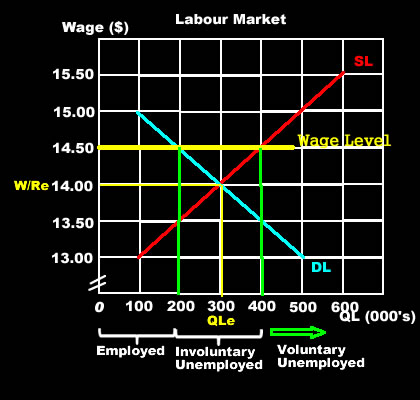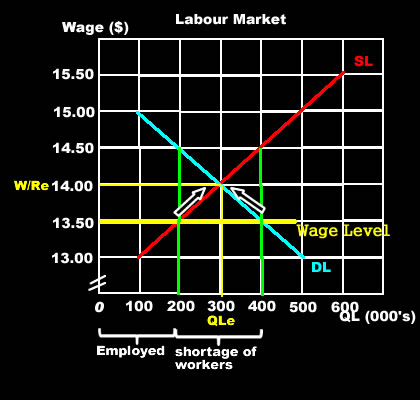EQUILIBRIUM IN THE LABOUR MARKET
Objectives:

Equilibrium in the labour market is where supply equals demand. The wage at this point is the market wage or the market clearing wage.
No worker who wants a job at this wage rate or a lower one is without a job. They are employed.
No firm who wishes to hire people at this wage rate (or higher) has vacancies. The market at this point has cleared.
Any worker who is not prepared to work for this wage rate is without a job and is voluntarily unemployed and is without work. (The area to the right of equilibrium).
In the long term quantity supplied of labour will change in a response to real wages.
Real Wages are the purchasing power of a persons wage. It takes into account inflation. This can be compared with a persons nominal wage which is the wage rate a person receives in their hand - the dollar amount of their wage.
 |
If the real wage rate rises above the equilibrium wage rate then more workers will be supplied than is demanded by the market – a surplus of workers. This will create a involuntary unemployment because these workers want a job but are unable to find one.
|
 |
Increasing Wages. This will create a shortage of workers and so the real wage rate will increase removing he shortage, with the labour market going back to the equilibrium. |
DISEQUILIBRIUM IN THE LABOUR MARKET
Wages in an economy tend to be ‘sticky� This means that wages will rise much more easily than they will fall. Labour markets are very rigid when it comes to falling wage levels.
Some of the main reasons are
Impact Of A Minimum Wage
 |
A minimum wage means that the wage rate is set above the equilibrium wage rate by law. |
FLEXIBILITY IN THE LABOUR MARKET
Flexibility is the willingness and ability to adapt to changing conditions. The adaptation might mean